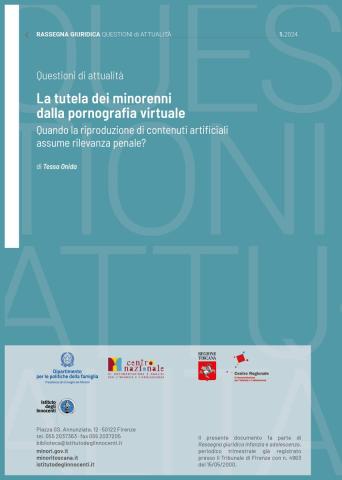
Protection of Children from Virtual Pornography. When Does the Reproduction of Artificial Content Become a Criminal Offence?
The need for appropriate legal instruments to combat all forms of sexual exploitation of minors has led legislators in recent years to take repeated action on this issue, particularly in response to the growing dissemination of child pornography on the web. In this context, in fact, progressive digitisation has posed a number of challenges, including the fight against sexual abuse perpetrated online against minors.
To prevent the phenomenon from spreading, it is essential for not only as many States as possible to adopt provisions that adequately punish such abuses, but also that this is done with rules that are as uniform as possible. This would help avoid situations where perpetrators of these crimes - primarily committed online and therefore difficult to contain - benefit from the lack of regulatory consistency between countries. In this regard, the European Commission has once again taken a broad and pragmatic view on this issue by adopting on 24 July 2020 the Communication “EU Strategy for a more effective fight against child sexual abuse” whose aims is to give a clear and effective EU-wide response to sexual abuse crimes.
Attached is an in-depth case law on protecting children from virtual pornography.
| Attachment | Size |
|---|---|
| 400.8 KB |

